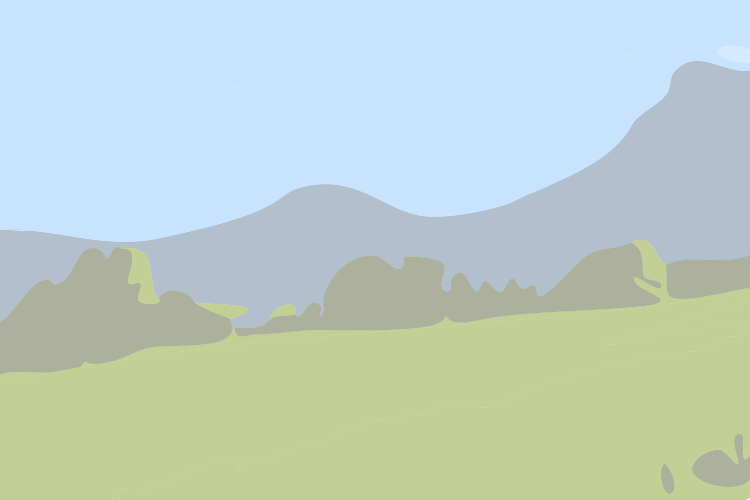IGN MAP


























Follow in the footsteps of the Emperor Napoleon’s route taken with his troops during the last days before the Battle of Waterloo in 1815.
The Route in Wallonia is 56 miles long, with its history, museums, heritage, folklore, UNESCO World Heritage sites, scenery, regional gastronomy and more.
Specific signposts will guide you along this historic route.
Visit this route at walloniabelgiumtourism.co.uk/waterloo1815
The Emperor Napoleon abdicated in 1814 following his military defeats. He was exiled to the island of Elba, but on the 1st of March 1815, he reached the European continent and landed at Golfe-Juan in France. Napoleon Bonaparte gathered together his loyal troops again and marched towards Paris. He regained leadership of the country, which was frowned upon by the other European countries.
On 18 June 1815, 15 km from Brussels, the Allied troops commanded by the Duke of Wellington and Marshal Blücher, confronted Napoleon’s French Army. Nearly 200,000 men from seven nations fought, leaving almost 50,000 casualties in just one day. The world-famous Battle of Waterloo played a major role in European history.
IGN MAP

AERIAL PHOTOS / IGN

MULTI-SCALE MAPS / IGN

TOP 25 IGN

SLOPE MAP (IGN PLAN)

CADASTRAL PARCELS

ICAO AERONAUTICAL CHARTS

MAP 1950 / IGN

MAP OF THE GENERAL STAFF (1820-1866)

COASTAL MAPS / SHOM/IGN

SCAN EXPRESS STANDARD / IGN

CLASSIC EXPRESS SCAN / IGN

OPEN STREET MAP

GOOGLE MAP - SATELLITE

GOOGLE MAP - MAP

GOOGLE MAP - HYBRID

IGN BELGIUM


The Emperor entered the existing Walloon territory through this little village. It was here that he made a legendary encounter with an audacious young villager who tried to convince him not to continue on his way. The little standing stone , near the Pont de la Tannerie (bridge), is a reminder of this premonitory conversation.
Standing stone - Rue de la Tannerie • 59740 Hestrud, France

Napoleon and his troops spent the night of the 14th to the 15th of June 1815 in Beaumont. The soldiers set up their camp at the foot of the Salamander Tower, which was built in the 11th century. It now houses a small local history museum including a room dedicated to Napoleon’s passage. The Emperor stayed nearby in the mansion of Maurice Gabriel Joseph Riquet de Caraman, the Prince of Chimay. A plaque on the façade of the building reminds us of this event (Grand Place 12).
Tour Salamandre • Rue de la Poterne • 6500 Beaumont
visitwallonia.com/en-gb/content/tour-salamandre?cookie_lang=en-gb

On June 15th 1815, General Reille, Chief of Napoleon’s 2nd Army Corps, set up his headquarters in this 14th-century building. The castle houses an exhibition dedicated to the General and a pharmacy museum.
Rue du Marquis 1 • 6530 Leers-et-Fosteau
visitwallonia.com/en-gb/content/chateau-du-fosteau-thuin

At dawn on the 15th of June 1815, Napoleon and his troops passed in front of the Ferme de la Cour. It is the former principal farm of Lobbes Abbey, and is made up of different successive constructions, including a 14th-century tower keep, a remnant of the abbey’s former medieval court of justice. Today, the farm is home to the Biercée Distillery, which you can visit. The famous Eau de Villée is produced here, as well as the equally famous Mandarine Napoleon. As well as “eaux-de-vie”, the distillery also produces local liqueurs, gins and aperitifs.
Rue de la Roquette 36 • 6532 Ragnies
visitwallonia.com/en-gb/content/biercee-distillery-ragnies-famous-its-eaux-de-vie-and-liqueurs

A slight detour on Napoleon’s route, Thuin was the site of confrontations between French and Prussian
troops on the morning of the 15th of June 1815. The town is worth visiting, if only for its 2 UNESCO World
Heritage gems - its 17th-century Belfry and the March of Entre-Sambre-et-Meuse Saint-Roch, a religious procession escorted by marchers wearing Napoleonic military uniforms.
visitwallonia.com/en-gb/3/where-to-go-in-wallonia/walloon-towns-and-cities/thuin

Dating from the late 19th century, the chapel is located in the place called “Les Trois Arbres” (the three trees). Napoleon watched his army marching towards Charleroi from this spot on the 15th of June 1815. Dedicated to Notre Dame de la Victoire, the chapel is the starting point for processions during the “Marches of the Entre-Sambre-et-Meuse” (Intangible Cultural Heritage of Humanity recognised by UNESCO). Hundreds of marchers escort the relics of local saints, dressed in uniforms resembling those worn by the soldiers of Napoleon’s Old Guard.
Chemin des Trois Arbres 31 • 6120 Ham-sur-Heure

Dating from the late 19th century, the chapel is located in the place called “Les Trois Arbres” (the three trees). Napoleon watched his army marching towards Charleroi from this spot on the 15th of June 1815. Dedicated to Notre Dame de la Victoire, the chapel is the starting point for processions during the “Marches of the Entre-Sambre-et-Meuse” (Intangible Cultural Heritage of Humanity recognised by UNESCO). Hundreds of marchers escort the relics of local saints, dressed in uniforms resembling those worn by the soldiers of Napoleon’s Old Guard.
Eglise Saint-André • Rue Willy Brogneaux • 6120 Jamioulx

On the 16th of June 1815, Fleurus was impacted by the Battle of Ligny in which some of Napoleon’s troops
defeated the Prussian Army. Some edifices kept traces of this battle: the Moulin Naveau (Mill), where Napoleon set up camp to study the topography of the terrain; Château de Zualart (Castle), which housed his headquarters; Église Saint-Victor (Church), which was used as a hospital; and Château de la Paix (Castle), where he spent the night. His bedroom has been recreated here and is open to the public on appointment. The “personal” story which is hidden behind the “great” history is told here through artefacts and two educational films. The castle is labelled “Last Imperial Palace of the Emperor Napoleon on a campaign”.
Château de la Paix • Chemin de Mons 61 • 6220 Fleurus
www.fleurus-tourisme.be

The village of Ligny lies at the heart of the battle in which some of the Emperor’s Army and Blücher’s men fought on this day. For more than six hours, 157,000 men battled here. Established in a small 17th-century farmhouse which was used as a field hospital, the Ligny 1815 Museum is dedicated to reliving the Emperor’s last day of victory. The interactive and fun trail allows families to immerse themselves in the heart of history.
Ligny 1815 Museum • Rue Pont-Piraux 23 • 5140 Ligny
visitwallonia.com/en-gb/content/follow-steps-napoleon-ligny-museum-1815

At the same time as the Franco-Prussian Battle of Ligny, the French and the British clashed at Les Quatre-Bras de Baisy-Thy on the 16th of June 1815. There was no clear victor. Some monuments have been placed on the site in commemoration of the battle.
Chaussée de Namur / Rue Dernier Patard • 1470 Genappe

Having left Fleurus castle, Napoleon continued his march forward. On the night of the 17th of June 1815, he established his Headquarters at the Ferme du Caillou - in the little hamlet of Vieux-Genappe, 2.4 miles from Butte du Lion (Lion’s Mound). All night long, an unparalleled tumult reigned here. Today, a museum, which is accessible to all (including people with reduce mobility, visually impaired and deaf visitors), has been established here and allows you to experience the last hours preceding the battle along with the Emperor and his officers. Fun and sensory activities allow you to go back in time and provide insight into the lives of the soldiers and the Emperor’s battle strategy.
Chaussée de Bruxelles 66 • 1472 Vieux-Genappe
visitwallonia.com/en-gb/content/ferme-du-caillou-napoleons-last-headquarters-battle-waterloo

On the 17th of June 1815, the day before the Battle of Waterloo, the Duke of Wellington at the head of
the British and Allied Forces set up his field hospital at this farm. Over 6,000 soldiers were cared for here and many of them owe their salvation to the proximity of the place to the battlefield. Today, renovated with due regard to history, it is home to a museum which pays tribute to the surgical function of the place. It explains the history of field hospitals and their role during wars. The Ferme de Mont-Saint-Jean also houses a microbrewery, which produces the famous ‘Waterloo’ beer, a micro distillery and a shop selling many different products such as beers, gins and whiskies.
Chaussée de Charleroi 591 • 1410 Waterloo
visitwallonia.com/en-gb/content/mont-saint-jean-farms-microbrewery-and-museum-waterloo

The Battle of Waterloo began on the morning of the 18th of June 1815. The French troops fought the British who were joined by the Prussian Army. The battlefield covers an area of just over 600 hectares of fields and meadows across the territories of the towns of Braine-l’Alleud, Genappe, Lasne and Waterloo. At the end of the fight, the French Army surrendered and retreated in chaos. The site is dominated by a monumental mound (the Lion’s Mound), topped with a cast iron sculpture of a lion, to commemorate the spot where the Prince of Orange is presumed to have been wounded on the 18th of June 1815. At its feet, The Domain of the Battle of Waterloo 1815 welcomes you. Guided by a virtual soldier of your favourite army, you’ll discover the mechanism which brings you inevitably to the heart of the battle, in a multisensory experience unique in
Europe. Activities are planned during peak season, like a horse-drawn carriage which takes you to the
Ferme d’Hougoumont – a major historical site on the battlefield, that showcases an interactive show “The Battle in the Battle”.
Route du Lion 1815 • 1420 Braine-l’Alleud
visitwallonia.com/en-gb/produit/attractions/activites/monument/lions-hamlet-visitors-centre-and-waterloo-battlefield/9245

From the 17th to the 19th of June 1815, at the end of the Battle of “Quatre-Bras” Wellington set up his
headquarters at an inn in the heart of the village of Waterloo. It is here that he drew up his victory bulletin
following the Battle of the 18th of June, which he named “Waterloo”. Since then, this building houses the
Wellington Museum which includes a unique collection dedicated to each army. It presents in an educational
way the role and implication of each of the nations involved in this conflict. Opposite the Museum looms the Chapelle Royale de Waterloo, which was built in 1687. In the wake of the battle, this Royal Chapel was converted into a commemorative temple honouring Wellington and his allies. The walls of the adjacent
church are adorned with numerous funerary plaques of officers or soldiers killed in combat.
Chaussée de Bruxelles 147 • 1410 Waterloo
visitwallonia.com/en-gb/content/wellington-museum-waterloo-museum-retracing-1815-battle


